In my previous All Creatures entry I introduced you to two local stars – seastars that is- in the waters around Palmer Station. As members of the phylum Echinodermata, sea stars have a large and diverse extended family, as the opening image reflects.
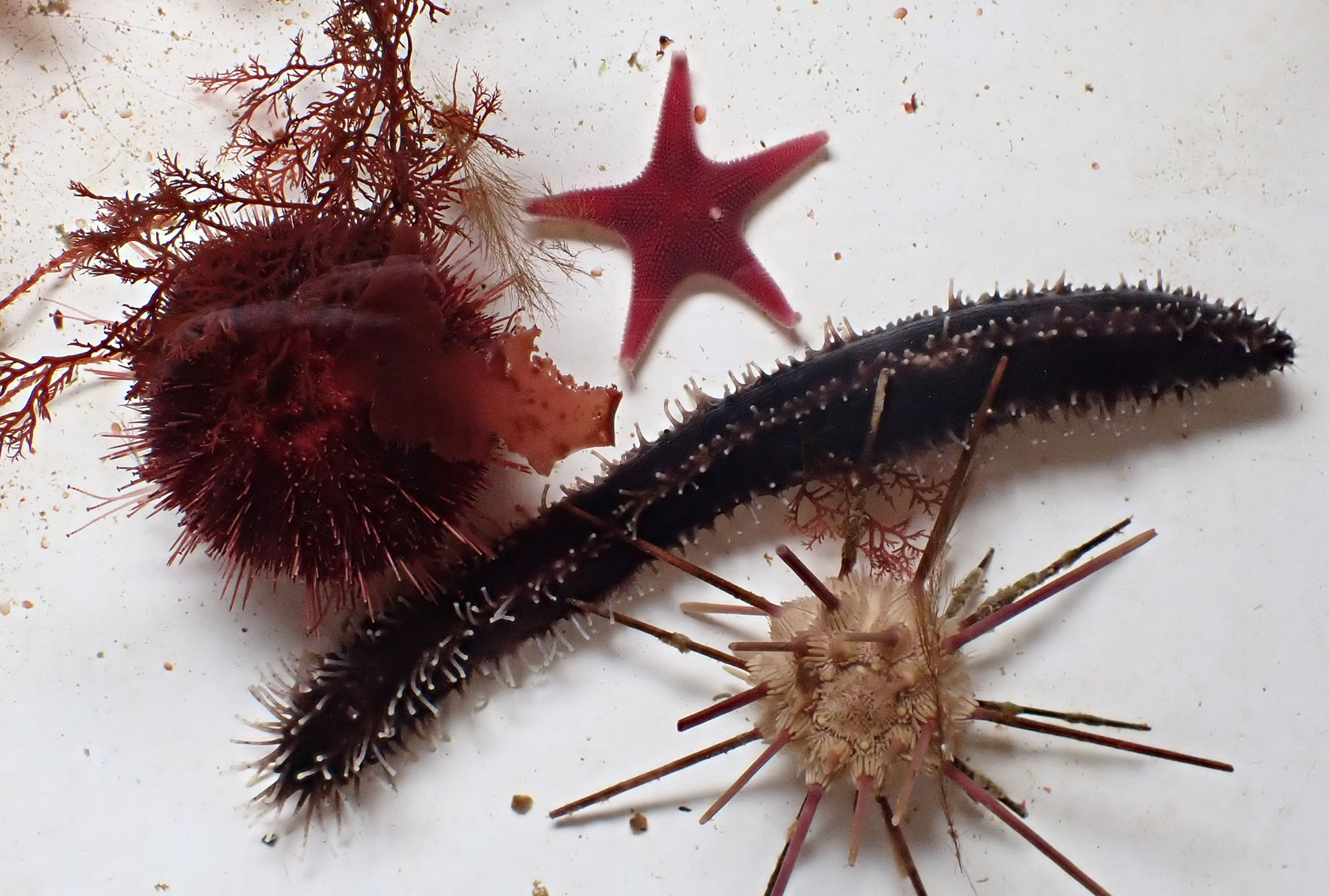
The word Echinodermata is from the Greek and literally means “spiny skin”. It may not be obvious in the image above but each critter in the Echinoderm ‘family’ portrait above has a spiny skin. Additionally, all share the trait of radial symmetry wherein the body plan radiates from a central core – as like the hub of a bicycle. In the case of echinoderms, the symmetry is based on five parts or multiples thereof. Another trait common to all echinoderms is a water vascular system - sort of like a water-based circulatory system which allows for gas exchange, movement, and feeding.
The sea star in the photo is one of the most common stars we see when diving and goes by the name Odontaster validus or O-val for short. The white blemish-like spot on its purply skin is the madreporite which is where seawater is taken into the star’s water vascular system. The structure acts like a filter and a sort of pressure relief/control valve. O-val frequents many of the algal species we collect so we inadvertently collect numerous individuals seemingly every dive.
Now to acquaint you with the other echinoderms in the image. To the left of O-val is a sea urchin Sterechinus neumayeri. Urchins have a central calcified round outer shell called a test from which as evident in the image below, lots of needle-sharp spines project sort of like a living pincushion. Some species have very long spines and can be a painful hazard to barefooted beach waders. No worries about that for Team UAB as in part S. neumayeri is not very common and we are never barefooted in the water!
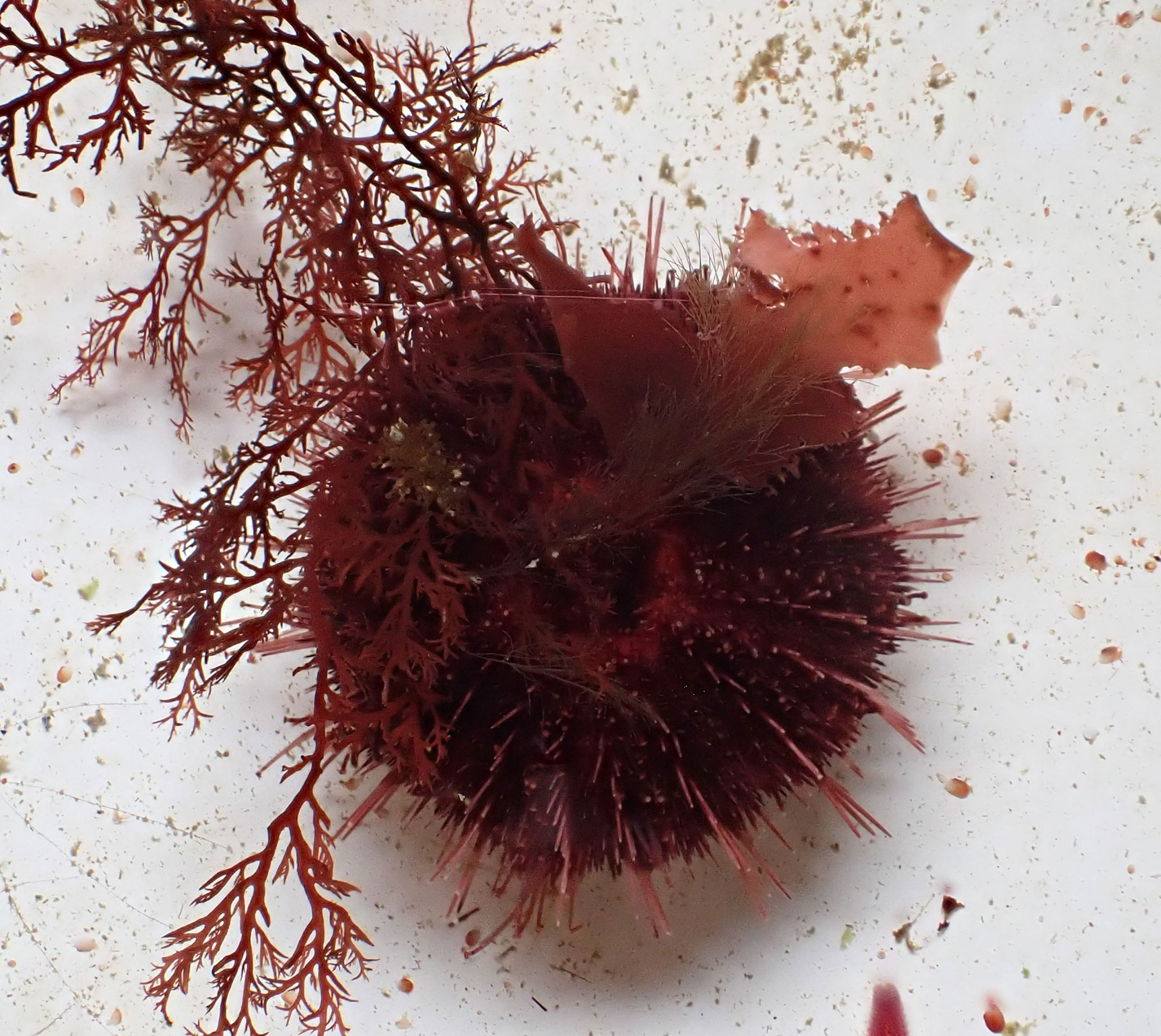
Also evident in the image of S. neumayeri are small portions of algae. Sea urchins often decorate themselves with algae as a sort of camouflage to hide from potential predators especially its main predators the sea anemone. Sea anemones would qualify as another multi-armed critter, in this case the arms are tentacles which could envelope or wrap around the urchin. In response to an embracing encounter with an anemone, the camo algal-clothed urchin could release its hold on the alga to make a quick, uncloaked getaway from the sea anemone. The image below shows extended tube feet and the suckers on the bottom which help the urchin move.
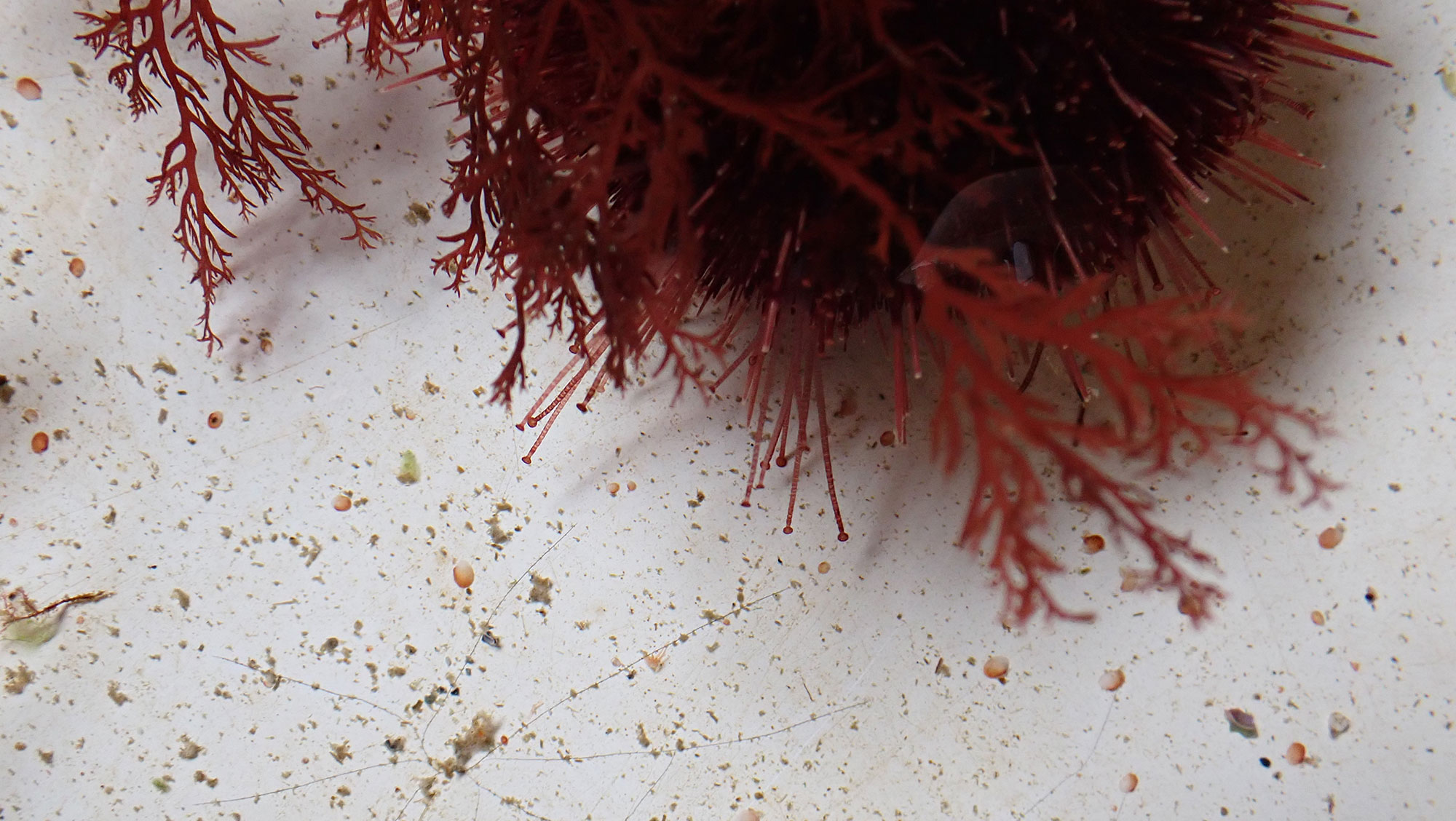
Sea urchins come in two varieties and both types are featured in the opening image. Ctenocidaris perrieri, commonly known as a pencil urchin is rarely seen here. The spines are reduced in number but are generally longer and, thicker (in some species as thick as the diameter of a pencil) than the local relative S. neumayeri. Older individuals may have organisms, like encrusting sponges or barnacles, living on the thick spines. In the image below it is easy to see the spherical test and its pentamerous symmetry. Look close at the center of the test to see a five-pointed structure which includes the pressure valve-like madreporite.
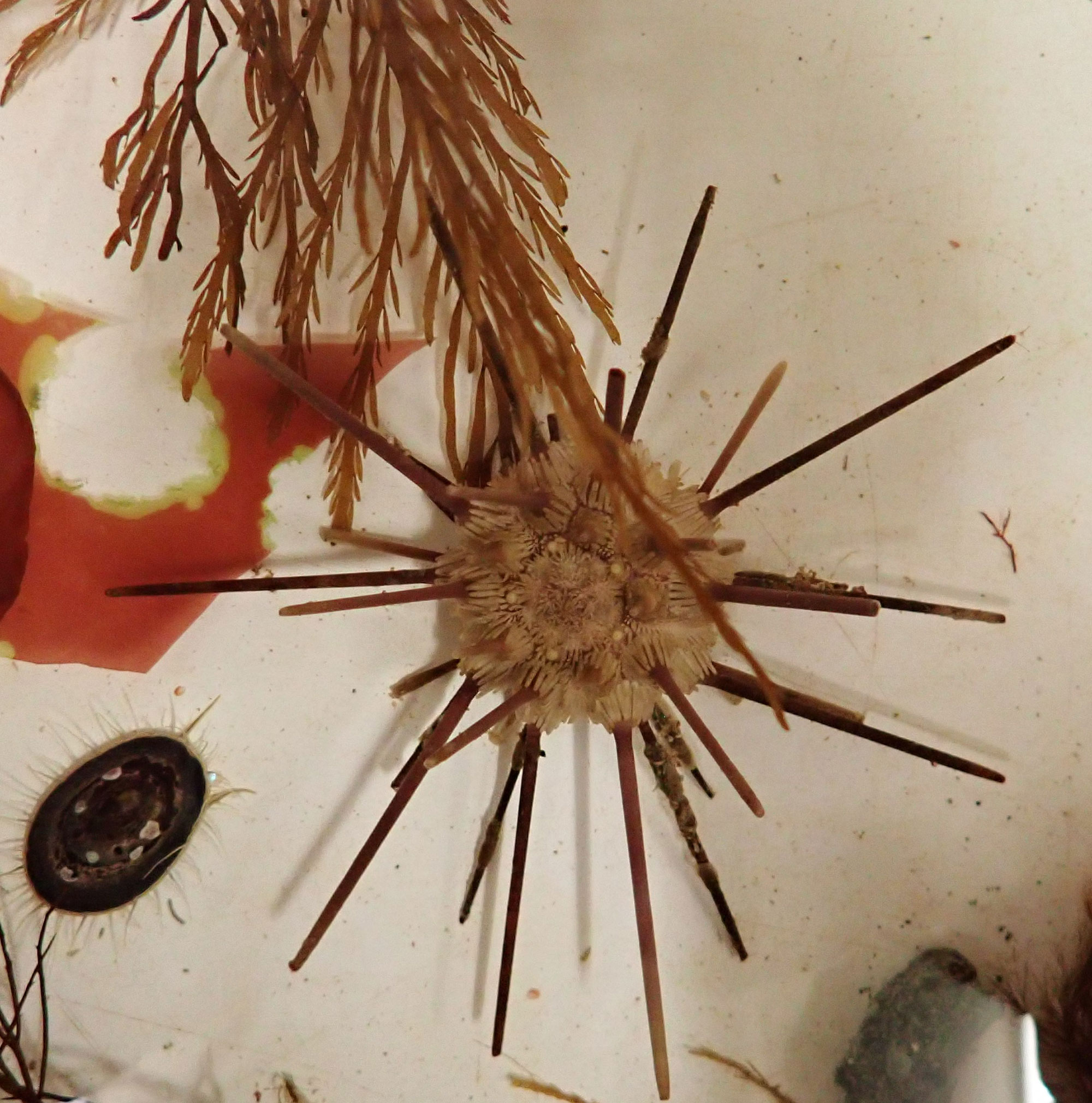
Last but not least in this tour de echinoderms is the long, skinny brown critter in the center of the opening image. Use your imagination to plump it up a bit and replace the brown with green and think a favorite item to grow in the home garden – a cucumber. Sea cucumbers, scientifically known as holothuroids, have five rows of tube feet running the length of the body. The spines of the ‘cuc’ are very small and imbedded in the soft skin. Our local cuc has white tipped tube feet which can be used for locomotion and digging in soft substrates for tasty morsels. The narrower end of the cucumber houses an array of tentacles which the organism will unfurl in order to feed on smaller organisms that encounter the sticky tentacles. The water flow in our sorting tank is usually too slow to encourage the cuc to splay out its tentacles.
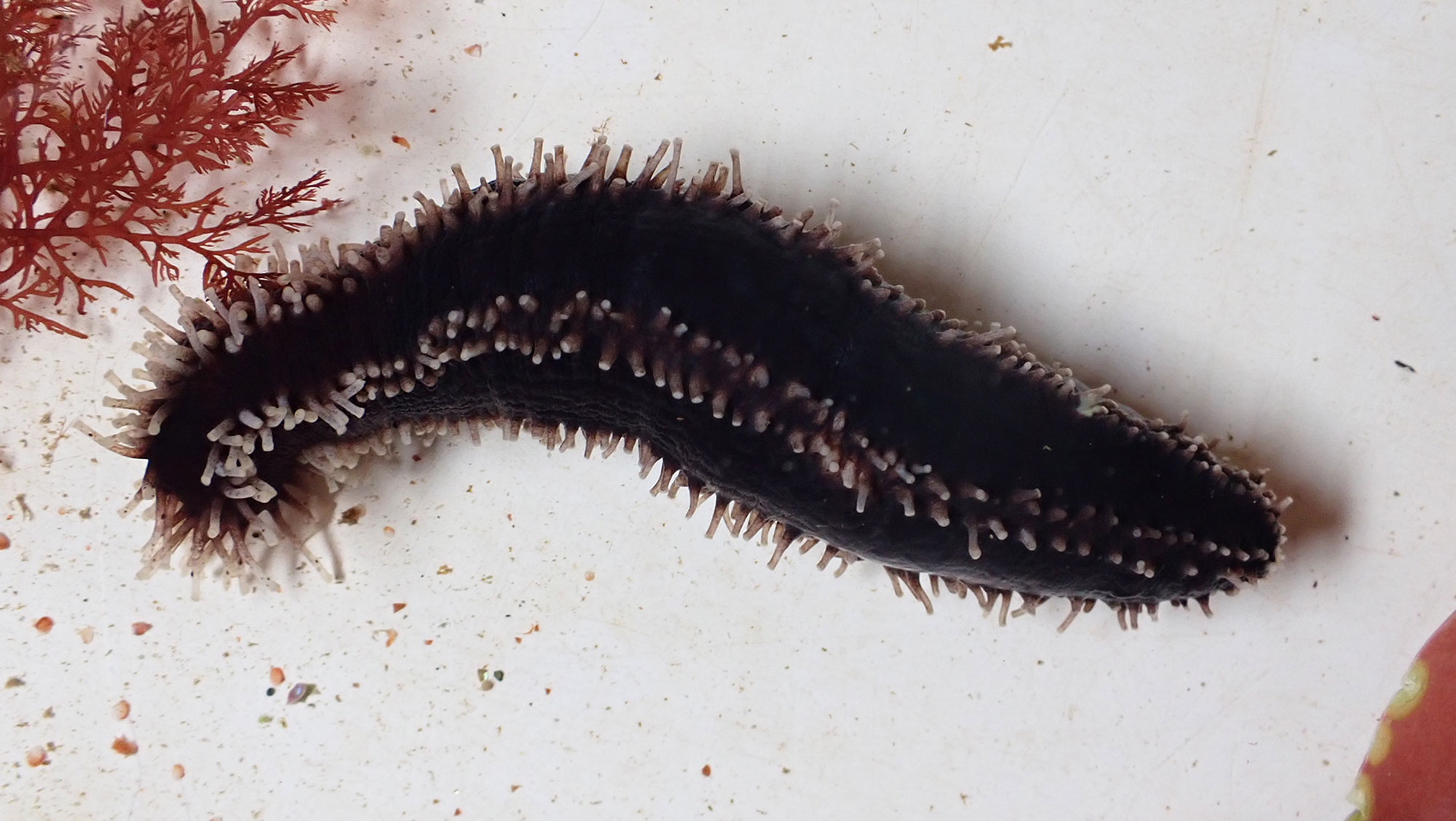
Two fun facts about sea cucumbers. When disturbed by a predator or a diver accidentally scooping one up when collecting algae, it may eviscerate or expel some of its internal organs (eww!). Such seemingly self-harming behavior either scares off or satisfies a would-be-predator. No worries for the cuc though as amazingly, it will regrow another set of organs.
Fun fact two: some sea cucumbers are a culinary delicacy in parts of the word. Despite the spines imbedded in its skin, the muscular body wall is a delicious treat in Chinese dining. However, some species are poisonous so maybe don’t try this taste sensation without proper guidance.
Stayed tuned for another All Creatures……